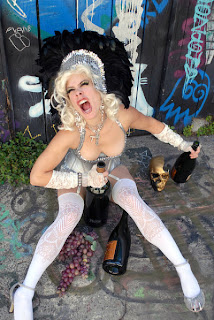Last night I finally got around to seeing Lena Dunham's first feature film after having my interest piqued by this New Yorker profile over a year ago.
I was like, post-graduation, moving-back-in-with-the-parents blues? Taking crappy jobs while still talking about your vague artistic aspirations? Trying to not kill yourself at house parties? All filmed by a privileged white girl? Sign me up, baby.
I loved the music, which was composed by Teddy Banks, and the otherworldly quality of the loft where much of the film is set: it looked like a trendy, spacious submarine. The overall aesthetic made me think of Wes Anderson: artful compositions; white rodents; sans-serif fonts.
The idiom in which characters speak—youthful, hip, betraying a certain class and education—felt fresh and authentic. You could tell it was the screenwriter's native tongue (Dunham writes and stars as well as directs), not the guesswork imitation of some hack. Dunham also parodies that language, of course. One character's affection for the word "special"—evidently an all-purpose compliment—was especially funny.
There's nary a likable soul in the film, which is clearly a deliberate choice. Tiny Furniture puts our worst sides—selfish, cruel, hypocritical, and smelly—on relentless display. There's little hope for redemption or release; the only real variation in tone comes when characters decide to be charming, but then those efforts usually become false and ingratiating as well. It's not often a pleasant 100 minutes, but Dunham's vision is unique—or, as she might put it, "special." One of my favorite moments was toward the end of the film, when the 22-year-old main character crawls into bed with her mother. It felt sweet and nostalgic—which by that point was a much-needed relief—but also tense and claustrophobic: simultaneously a pull toward and a push away from a childhood home.








